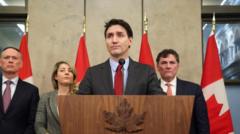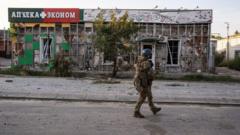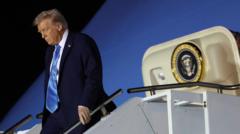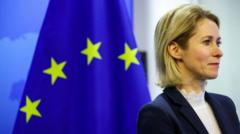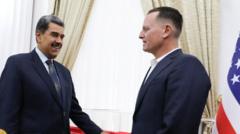The US has transferred $20 billion to Ukraine, funded through seized Russian assets, as part of a larger commitment. With political changes looming, the stability of future support remains uncertain.
US Allocates $20 Billion to Ukraine from Seized Russian Assets
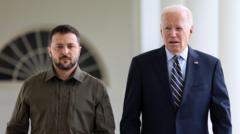
US Allocates $20 Billion to Ukraine from Seized Russian Assets
The funds will support Ukraine amidst ongoing conflict as political shifts in the US raise questions about future aid.
The United States has announced a significant economic contribution of $20 billion (£15 billion) to Ukraine, utilizing profits derived from seized Russian assets. This funding is part of a broader $50 billion (£39 billion) aid package established by G7 member nations, disclosed earlier this year in June. US Treasury Secretary Janet Yellen emphasized that this arrangement ensures that "Russia bears the costs of its illegal war, rather than American taxpayers."
The transfer occurs just weeks before incoming President Donald Trump, who has expressed intentions to expedite the end of the conflict, takes office. Trump has characterized support for Ukraine as a burden on US resources, fueling uncertainty about the future of financial assistance.
The US Treasury confirmed that the $20 billion had been placed into a World Bank fund. Notably, any funds administered by the World Bank cannot be allocated for military endeavors. Although there were aspirations to allocate a portion for military aid, governmental approval from Congress has been historically slow. A previous military aid package of $61 billion was only approved in April, after months of political contention within the House of Representatives.
Yellen accentuated the importance of the funds, highlighting their role as a "critical infusion of support" for Ukraine as it counters what she described as "an unprovoked war of aggression." This decision follows extensive dialogue among the US and its allies, including the EU, aiming to appropriately utilize approximately $325 billion (£276 billion) worth of Russian assets that have been frozen since the escalation of the conflict in Ukraine in 2022.
In October, the G7 reached an agreement to utilize the interest from these assets, approximately $3 billion (£2.4 billion) annually, to facilitate a $50 billion credit over 30 years, with expectations to initiate payments by the year’s end. The European Union has similarly pledged more than €18 billion (£15 billion) through equivalent funding mechanisms.
The $50 billion support is aimed at ensuring that Ukraine maintains essential services, hospitals, and the critical infrastructure needed for its ongoing resistance against Russian aggression, as Ukrainian forces face recent territorial losses. Both Moscow and Ukrainian troops have shared insights revealing the deterioration of conditions on the war's frontlines, heightening concerns regarding the future of Ukraine's defense and autonomy.


